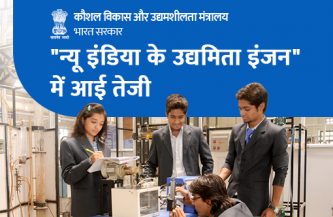UJALA –TOWARDS A GREENER INDIA WITH ENERGY EFFICIENCY

In a rapidly industrialising world, climate change is no longer some far-off problem. It is the most serious environmental issue facing us and needs to be tackled head-on. As one of the fastest growing economies in the world, India has a big role to play in the fight against climate change. The country is at a pivotal juncture in formulating its energy and climate policy.
“We, the present generation, have the responsibility to act as a trustee of the rich natural wealth for the future generations. The issue is not merely about climate change; it is about climate justice” – PM Narendra Modi
The Government under the leadership of PM Narendra Modi has undertaken a two-pronged approach to cater to the energy demand of its citizens and minimizing CO2 emissions at the same time. On the supply side, the Government is promoting greater use of renewable resources while on the demand side, efforts are being made to efficiently use energy by hitching innovative policy measures to 21st century technologies.
The UJALA programme has been a primary achievement of the Government in promoting and executing the concept of energy efficiency. The movement was heralded by the simple act of switching one light bulb to LED at the Prime Minister’s Office. Prime Minister Narendra Modi described the LED bulb as “Prakash Path” – “way to light” and set a target of replacing 77 crore incandescent lamps with LED bulbs by 2019.
Did you know?
An energy economist at the world bank described India as the poster boy for clean energy.
Watch this video to know more such interesting details.
The lighting sector accounts for about 20% of the total energy consumption in India. LEDs not only improve lighting levels but also lead to energy and cost savings of 50% to 88%. A 7W LED provides the same and in most cases better brightness than a 60W incandescent lamp. The country aims to save 20,000 MW through the scheme which will ensure 24×7 access to power in rural areas. Additionally, large scale and transparent procurement has led to a reduction in the cost of LED bulbs.
And, all of this has been accomplished without any government subsidy. The Government set up an Energy Service Company(ESCO) called Energy Efficiency Services Limited under the Ministry of Power. High quality LED bulbs are given to domestic consumers at 40% of the market price. EESL makes an upfront investment of 100% and the Electricity Distribution Companies (DISCOMs) pay EESL from energy savings over 5 years.
Not only did India’s lighting revolution usher in a paradigm shift within the country, but also created an energy transformation model that other countries can use to support their own sustainable development goals. In fact, EESL is already replicating the model in the United Kingdom and Malaysia.
The adoption of this model by two other countries is yet another achievement towards furthering the idea of energy efficiency to conserve resources and protect the environment.“India’s zero-subsidy UJALA programme has paved the way for a brighter future and has now travelled to our country. We will do our bit to seize the learnings of this programme and replicate the same in Malaysian State of Melaka. This will not only benefit the environment, but will also foster new avenues of economic growth in the region.”- Datuk Seri Utama Ir. Hj. Idris Bin Haron, Chief Minister of Melaka, Malaysia
The powers of science and technology have shaped the world to a great extent, but at a certain cost. The Government is embracing LEDs and renewables since it understands the urgency of climate action. But, a great deal of responsibility lies with the public to understand the importance of energy efficiency, be sensitive to environmental issues and be a part of this change.

















